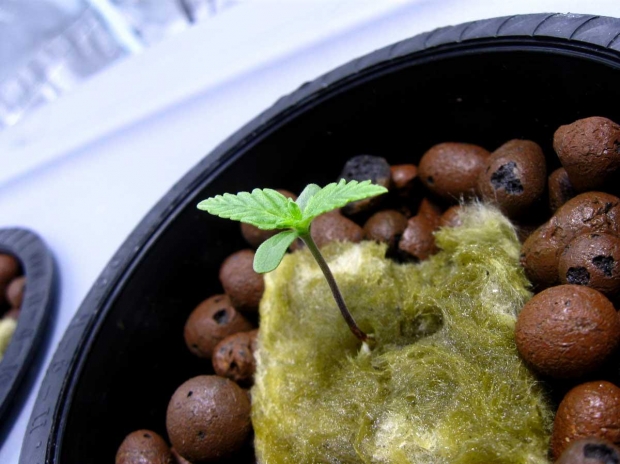 Loading... Please wait...
Loading... Please wait...Save Money. Grow Your Own!
Fast Plain Box Shipping.
We ship to the US & Canada.
Grow Your Own!
Deep Water Culture System? Easy!
Posted on 9th May 2016
We've talked about a few kind of very easy hydroponics systems -- but then there's the deep water culture system. Like the other systems that we've covered, the term “deep water culture” sounds fancy. It sounds that you have to do different things with water, and introduce some sort of sophisticated environment for plants.
It's not -- it's this simple: put plant roots in water.
Plant Pots
As with other kinds of systems, hydroponic plants in deep water water culture systems sit in pots. Again, this isn’t difficult. The biggest question is what to put in those pots instead of soil.
If you've never done anything with hydroponics before, you know that you're not using soil -- but you might not know what you are supposed to use. One easy thing is that a number of very popular types of grow media are pretty effective. There's rockwool, which is the kind of fibrous natural material. There's coco coir, which is made from coconuts. There's clay pellets, which are made from clay.
With deep water culture, this is even easier. Most people recommend rockwool, and some recommend clay pellets. You can really use either one. Fill up the pots for plant roots and have your seedlings sit inside of them.

Introducing Water
Here's a very easy part of the deep water culture system -- unlike the other kinds of systems we've talked about, you don't have to make the water level change. At least. not every day.
Instead, you just make sure the water is oxygenated. You'll use things like bubble stones and air pumps to make sure there's enough oxygen in the water, so that plants can sit there indefinitely.

Then what you do is, you raise the water up to the level of the plant roots and you leave it there. Easy, right? The reason this is simpler than other types of systems is that with many other types of systems, you have to bring water into the plant environment every day, and then drain it out again. That may require timers and other gear. With deep water culture, you just sit plants in the water and leave them there until they're ready to start flowering. At harvest time, or when they start to flower, you might start draining the water out and allowing the plant roots to hit the air just so that they grow their fruits a little bigger. But that's up to you. It's not something you have to worry about or have some kind of in-depth knowledge about when you start out.
Nutrient-Rich Water
We use this phrase so much because it really describes what hydro plants need. They have to have water that has a certain level of nutrients in it.
What do you feed plants? Well, just like in the soil, they use certain fundamental elements like nitrogen, potassium, phosphorus, calcium and magnesium. But you don't have to be a chemist to do deep water culture or any other type of system. You just buy nutrient solutions from a retailer where scientists have already determine what's good for plants. And then you dump it into the water until you reach a good level.
Finagling the Reservoir
One disclaimer here is that with deep water culture, you do end up changing the reservoir water fairly frequently or try to determine what's in it. In most cases, you have to maintain a good pH value, total dissolved solids level, and quality of water for plants to thrive. This is something you may need to read up on a little bit, because it’s one of the most important parts of the deep water culture system -- or in other words, one of the biggest parts where you can actually get things wrong.
In some ways, this simplifies the process that you use when you start to develop plant cycles based on the deep water culture system. But in terms of the structure of that system, it's absolutely true that they can be very basic and simplified. You can put plants in tray tables and let them retain the water. That's what a deep water culture system is. You can source all of the equipment and gear that you need from top hydroponic retailers to get started quickly and easily, and start growing your own plants right in your home or business space.
